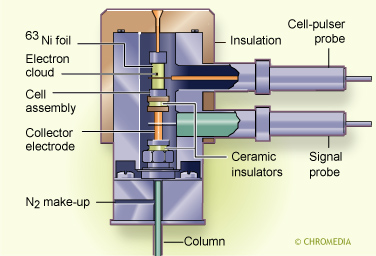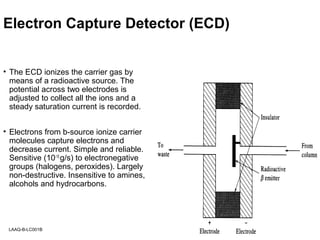
Mass spectrometric detection and atomic emission detection, which could be considered as ionization detectors of a more sophisticated and complex design, are not discussed in this report.Įlectron-capture detector Flame ionization detector Gas chromatography Helium ionization detector Ionization detectors Performance characteristics Photoionization detector Response mechanism Thermionic ionization detector.Ĭopyright © 2015 Elsevier B.V. The design, response characteristics, response mechanism, and suitability for fast gas chromatography are the main features summarized in this report. The main ionization mechanism discussed in this report are combustion in a hydrogen diffusion flame (flame ionization detector), surface ionization in a plasma (thermionic ionization detector), photon ionization (photoionization detector and pulsed discharge helium ionization detector), attachment of thermal electrons (electron-capture detector), and ionization by collision with metastable helium species (helium ionization detector). The US Nuclear Regulatory Commission classifies radiation sources inside electron capture detectors in a gas chromatograph into three categories: Specific. These electrons are injected into a stream of inert carrier gas (helium or nitrogen), where they reach thermal energy equilibrium through collisions with the carrier gas. The ECD (Electron Capture Detector) is a chromatographic detector that may be used in a GC (Gas Chromatograph) instrument. This facilitates the detection of a minute number of charge carriers facilitating the use of ionization mechanisms of low efficiency while providing high sensitivity. An electron-capture detector is an ionization chamber in which electrons are produced from a radioactive source (usually tritium or nickel-63). The column and makeup gases commonly used in gas chromatography are near perfect insulators.

In this work we show first experimental results using 1,1,2-trichloroethane and sevoflurane, and investigate the effect of several operating parameters on the analytical performance of this new non-radioactive electron capture detector (ECD).The gas phase ionization detectors are the most widely used detectors for gas chromatography. 1.1, selected individual PCB congeners, or total PCBs (see Secs. 2.4 The chromatographic data may be used to determine the seven Aroclors in Sec. Here, we present a novel electron capture detector based on a non-radioactive electron source that shows similar detection limits compared to radioactive detectors but that is not subject to these limitations and offers further advantages such as adjustable electron densities and energies. either an electron capture detector (GC/ECD) or an electrolytic conductivity detector (GC/ELCD). However, the use of radioactive materials leads to regulatory restrictions regarding purchase, operation, and disposal.
ELECTRON CAPTURE DETECTOR FREE
Based on their operating principle, they require free electrons at atmospheric pressure, which are usually generated by a β - decay.

With detection limits in the low ppt v range, electron capture detectors are the most sensitive detectors available for such compounds. Based on their operating principle, they require free electrons at atmospheric pressure, which are usually generated by. Achieving limits of detection in the low pptv-range, electron capture detectors are the most sensitive detectors available for such compounds. The ECD detects electronegative compounds, especially chlorinated, fluorinated, or brominated molecules such as carbon tetrachloride, bromoform, PCBs, and. Gas chromatographs with electron capture detectors are widely used for the analysis of electron affine substances such as pesticides or chlorofluorocarbons. Gas chromatographs equipped with electron capture detectors (ECD) are widely used for the analysis of electron affine substances.


 0 kommentar(er)
0 kommentar(er)
